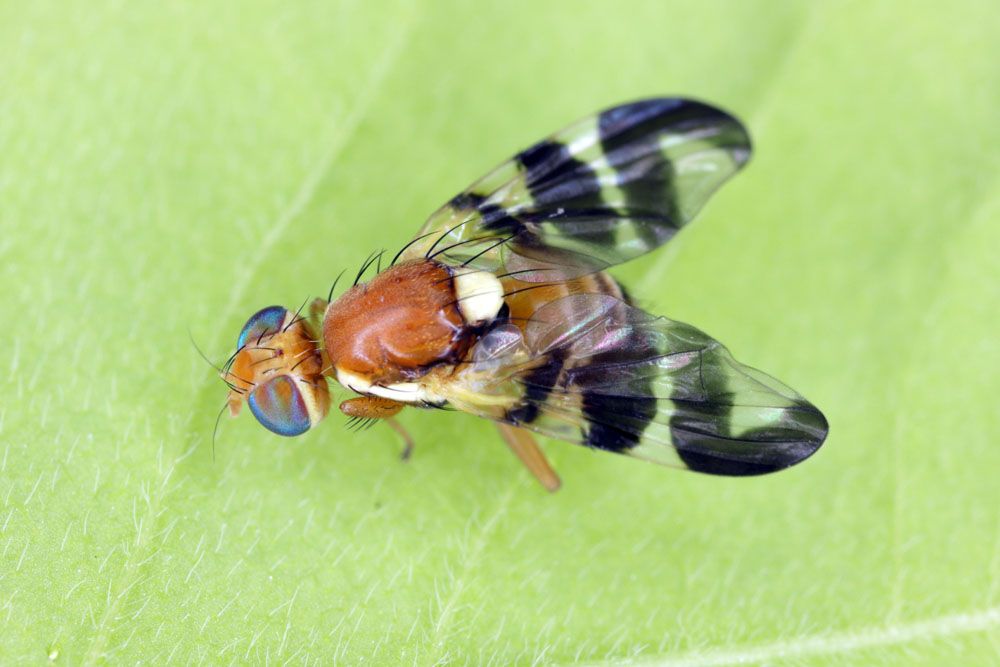
Walnut Husk Fly – Rhagoletis complete
Walnut Husk Fly: Appearance, Territory, Damage and Life Cycle
Latin Name:
Rhagoletis Completa
Appearance:
The adult walnut husk fly is 4-5 mm long. The walnut husk fly is a little, colorful fly that is approximately the size of a housefly. It features iridescent, greenish eyes and a yellow patch right below the places where the wings are joined. The wings contain three distinct black bands, one of which forms a V-shape around the wing. The wings are clear and marked with broad, blackish crossbands. The larvae are up to 6 mm long, whitish to yellowish white, and translucent.
Host Plant:
Walnuts are the major host of the walnut husk fly, although it may also attack late-maturing peaches in the vicinity of diseased walnuts. The walnut husk fly, like the cherry fruit fly, will stay on a single walnut tree or group of trees as long as there are plenty of nuts. It is mostly a peach pest in urban areas where peaches and walnuts are cultivated in close proximity, rather than in commercial orchards.
Territory:
The walnut husk fly was first discovered east of the Rocky Mountains. It was initially discovered in California in 1926 and had spread to the Pacific Northwest by the 1950s. In the West, it has become a significant mid- to late-season pest of walnuts. It occasionally infects peaches cultivated near walnut trees in Washington’s Yakima Valley.
Damage Caused:
Nutshell staining is the major husk fly damage, which is an issue in commercial orchards where nuts are cultivated for in-shell sale; but, in backyard circumstances, this may be tolerated. This damage can also be caused by other pests and pathogens (walnut blight and aphids), as well as environmental pressures (sunburn and water stress). Early walnut husk fly damage can reduce the value of the nuts by up to 30%. The husk fly maggots feed on the injured husks, causing them to adhere to the shell and be difficult to remove. Husk fly infestations in the early summer (June to August) can result in shriveled, moldy kernels.
Life Cycle and habits:
There is just one generation every year for this fly. Walnut husk flies overwinter in the soil as pupae and emerge as adults as early as May in certain locations, but commonly around July 1. In most cases, peak emergence occurs between mid-July and mid-August.
The female fly lays its eggs in clusters of around 15 under the husk’s surface. A little, sting like mark on the husk generated by egg laying is usually the first evidence of an infestation. These regions are difficult to notice at first, but they quickly deepen and appear as little black spots on the husk, generally at the stem end of the husk and on the shaded side of the nut.
Within five days, the eggs hatch into white maggots. The maggots feed within the husk, which expands the black region while remaining soft, unsunny, and smooth. The husk’s exterior surface is normally unblemished, but its mushy portions rot and discolor the nutshell.
Maggots that are older are about 1/4 inch long and have yellow mouthparts. Mature maggots descend to the ground and burrow several inches into the soil to pupate after 3 to 5 weeks of eating on the husk. The majority of them emerge as adults the following summer, but some can stay under the soil for up to two years.
